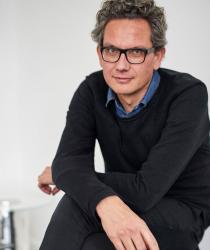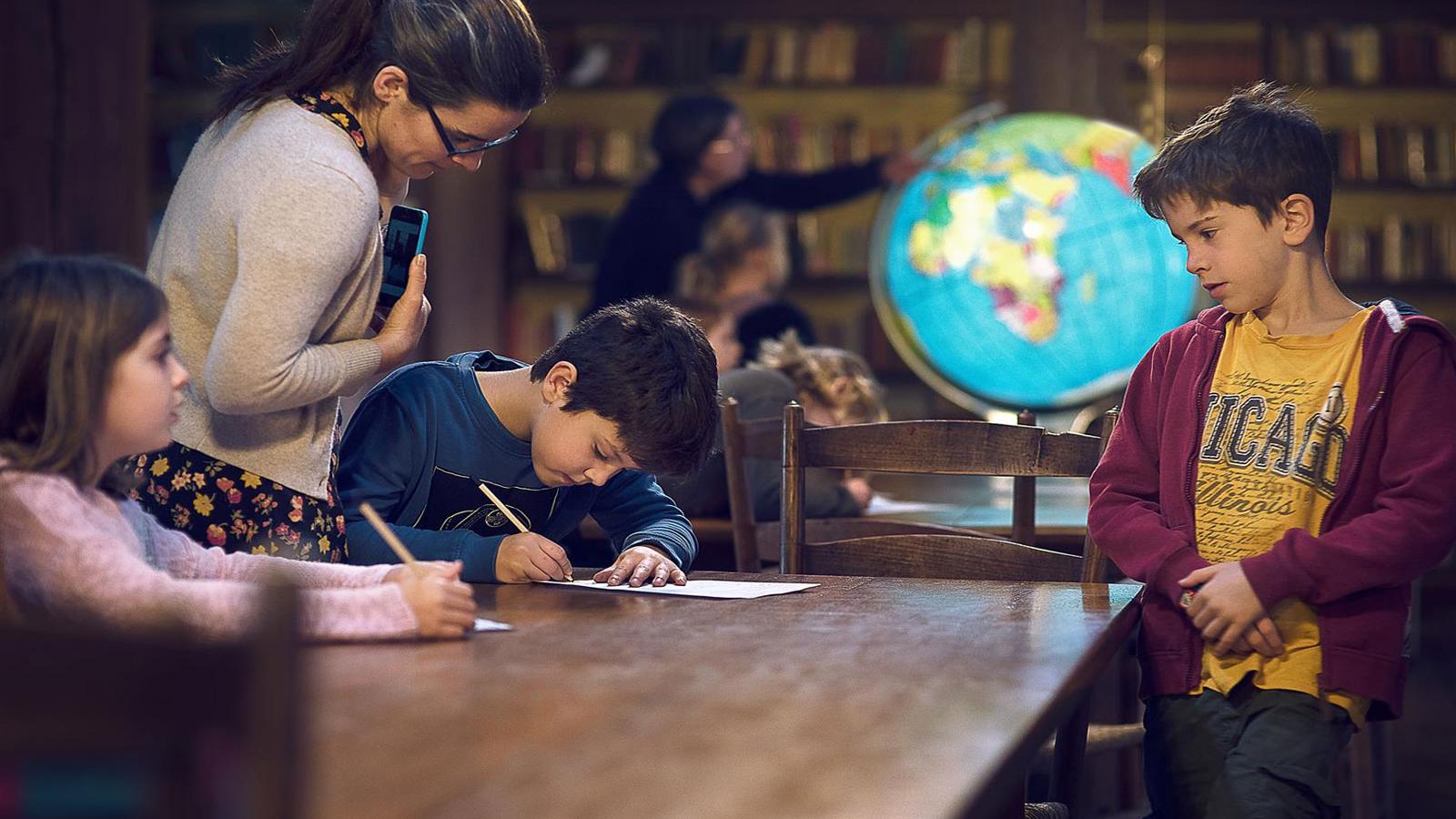
For most children of diplomatic families, the time arrives somewhat earlier in life than they might hope when local schools in far-flung locations are deemed inadequate for their long-term education. In Sebastian Bergne’s case, the moment arrived at the age of eight with his father at the British Embassy in Cairo. “I’d been at primary school when we were in Abu Dhabi but there was nothing appropriate for me in Egypt,” Sebastian recalls. “My parents decided to send me back to school in England but they didn’t want me to go to a traditional boarding establishment. Bedales fitted my sensibilities at the time and was in line with my family’s appreciation of the arts.” Sebastian’s mother was a ceramicist of high repute and his great-great grandfather was the pre-Raphaelite painter William Holman Hunt.
Approaching his new school in a positive and open-minded frame of mind, Sebastian did not immediately take to life at Dunhurst. “I found the early years pretty tough,” he admits. “Living away from home at such a young age didn’t suit me and I had trouble integrating socially so it was only really when I arrived in Block 3 at Bedales that I started to enjoy myself.”
Already something of a dab hand in the art and craft department, Sebastian’s early refuge was found in the workshops and barns at Bedales. “I’d enjoyed making things as long as I can remember, taking things apart, trying to put them back together and building models at a time when my peers were usually reading,” he explains. “I got involved in pottery at the start, spent a lot of time in the barn, sewing, weaving and basket making and later found the Bedales workshop to be an inspirational place. Teachers such as Martin Box, David Butcher and, in the art department, George Hatton, were incredibly helpful and supportive.”
The discovery that Sebastian was dyslexic had naturally impeded his academic progress to some extent. “I can’t be too critical because knowledge about dyslexia was so much less advanced back then and the school tried to help me as best they could, but my extra English lessons tended to result in more of the same difficulties,” he remembers. “In many ways, in fact, the Bedales approach to learning difficulties was state of the art for the time – I got extra time for my exams, for example, and managed to pass a decent clutch of O-Levels.”
As he moved through the school, Sebastian developed the support network among his peer group that every student needs. Gradually, the realisation dawned on him that he was beginning to fit in with life at Bedales. “It was probably a case of getting older and a bit wiser,” Sebastian reflects. “I dabbled in art, photography and music – because I was tall, I ended up playing the double bass and because the school orchestra needed another double bass player, I got free lessons! There was also a small jazz group which I played in badly and I was part of the team that did lighting for school productions.”
By the time that his sixth form years were upon him, Sebastian was already clear about his likely future direction. “I was thinking about photography, architecture or design but I also had an interest in science and maths, which I saw as linked to the creative disciplines,” he says. Quite unusually for the time, therefore, Sebastian sat four A-levels in art, design, maths and physics, a mixture which he now regards as perfect grounding for the professional life that he has made for himself. “When I think back to my teachers, I have to say that they handled us all pretty well,” he says. “My closest relationships would probably have been with the art and design teams and Dennis Archer on the maths side but all of them seemed to be remarkably respectful of us students and our ideas. You spent a lot of time together and the result was a real sense of community that had been established over a number of years.”
The Central School of Art and Design would be the first post-Bedales destination for Sebastian, who was anxious to get on with the next phase of his life. “It was a new world to me that I found exciting, challenging and enjoyable,” he remembers. “My foundation year was particularly useful and I felt confident in what I wanted to do, which ultimately was industrial design.” Having gained his BA in that sphere, Sebastian moved on to the Royal College of Art to take his Master’s, graduating with distinction in 1990. “The Royal College was a different level again,” he observes. “I had learned the essential skills – now I had the chance to apply them in a way I wanted.”
Armed with a growing self-confidence, Sebastian immediately made the decision to open his own commercial studio in London. “I did do a couple of trials at other businesses but that only confirmed to me that I wanted to set up my own thing,” he says. “I must have been quite naïve at the time because the early 90s was a rough time to start a business, but my parents gave me a lot of moral support and I started by working in my bedroom, basically. I bought myself a typewriter, then a fax machine and felt like I had an office!”
Early success provided the essential ballast for the new business, as Sebastian explains: “I produced a clip-on lampshade made of thin sheet steel in my first year after college, which was quite innovative for the time and had a fair bit of success. It won a handful of design prizes and was included in some important museum collections, giving me the kick start I needed to get a proper office and eventually start working with a number of major Italian design brands.”
The Italian approach to design immediately appealed to Sebastian. “A lot of these companies are family-run concerns and the appreciation for design in Italy seemed to be far ahead of the UK,” he says. “There were fewer opportunities for smaller design businesses over here and so, almost by accident, I opened a second studio in Bologna in 2000. Part of that was for personal reasons – I’d married a French woman and we had decided early on that we wanted to spend some time in a place where we were both foreigners!”
Although he would close his Italian studio after seven fruitful years, Sebastian’s business (www.sebastianbergne.com) would continue to flourish through its avowed aim of ‘making everyday objects special’ in an era when design and industry were beginning to collaborate to a far greater extent than ever before. “Design has almost become too fashionable now,” he muses. “Once, the cool thing was to want to become an actor – everyone knew that it would be tough and that not everyone could succeed, but it didn’t stop people from trying. The same is true now of design and the truth is the same – few people manage to earn a living doing it, although design offers such a great general education that it provides its students with creative and problem solving skills that are easily transferable to numerous other fields.”
Design, as Sebastian confirms, is still changing continuously. “I’m considered slightly old school, which I am, in that I like designing everyday objects, keeping involved in the hands-on process and preferring to keep the business itself a bit smaller than others,” he notes. “I prefer a more improvised way of working, which makes me more difficult to categorise; other designers are perhaps more business orientated and there is now a strong movement towards using design skills to solve problems in communities and society in general. The most important thing, in my opinion, is to have the confidence to be true to yourself, even if that may be to your own detriment, and to pass on your knowledge to the next generation. It’s because of that belief that I’m currently running the MA in Product & Furniture design at Kingston School of Art, where my main aim is to help young designers develop and find their own paths in design.”
Not long returned from a visit to Japan, Sebastian is continuing to absorb new design lessons from all over the world and put them to good use. “I love designing things that I haven’t done before, whether it’s in technological or more analogue areas,” he says. “The variety keeps me on my toes, every new client is a massive new learning curve and the desire to create burns as brightly as ever. I feel privileged to still be earning a living as a designer after all these years.”
There are an awful lot of Bedalian-style sentiments in Sebastian’s words and he is increasingly conscious of his debt to his alma mater. “When I left Bedales, I wanted to crack on with life and I didn’t look back on my school days for some time,” he reflects. “I’m much more aware of what I got from the place now – my last three years, in particular, were a unique luxury. If I’d been anywhere else, I might have come seriously unstuck. Although I haven’t been back in a while, I’m starting to get involved in a working group on the future of art and design at Bedales, so I might well be spending a bit more time there in the years to come. Only the other day, I was on a train chatting to a fellow traveller and neither of us was remotely surprised when we discovered that we were both Old Bedalians. There is a shared experience of having been to Bedales that seems to link people together, whatever their age.”

